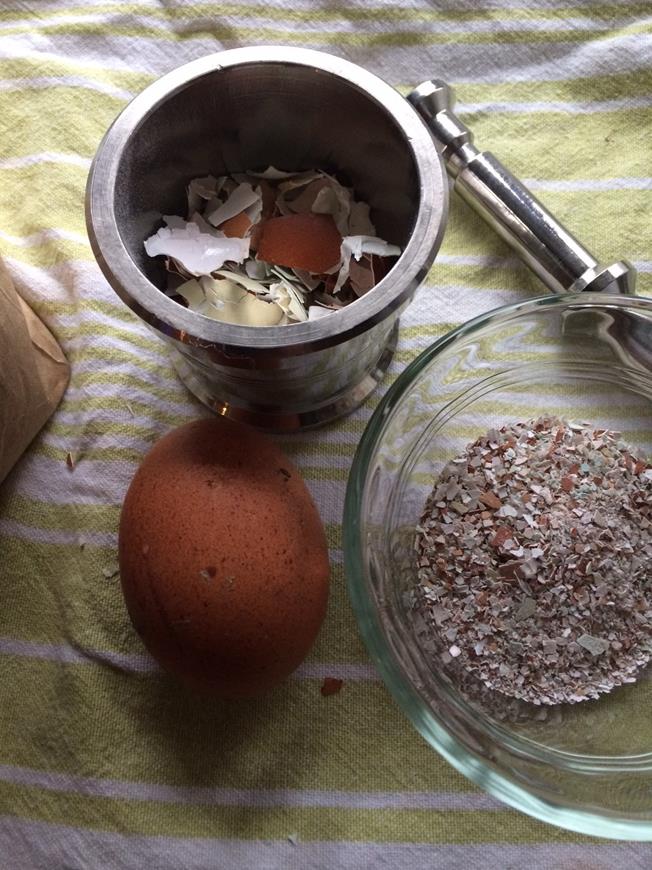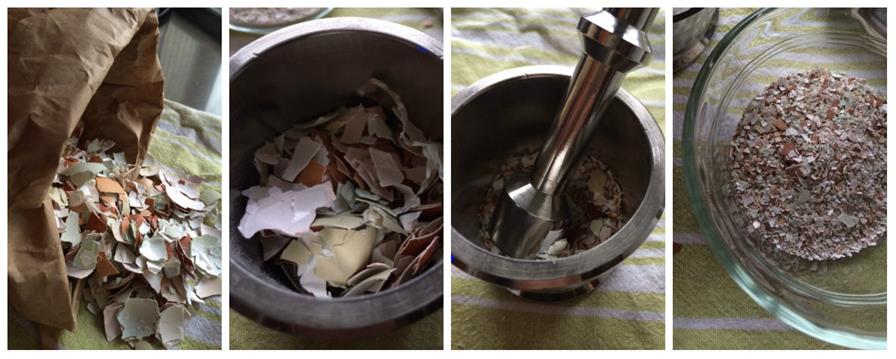Calcium is an important part of a healthy and happy chicken diet. Whether you have noticed some fragile or soft eggs shells from your girls or just because, now is a great time to think about supplementing them. In most places their egg laying will increase as the days are longer and the weather more pleasant. For my flock in Seattle, even though it is February, our days are remarkably longer now than December. Remember we are further north on the marble than most US Cities. (Don’t believe me on the latitude – check out this map from proud-geek.com. ) This week alone, the six girls have produced some 4 egg days. Not too shabby!
We periodically mix in a handful or two of crushed oyster shell with their pellets. Your goal should be prevention, so don’t wait for issues, just routinely provide. The primary sign will be soft shells, and these are more likely to get hung up inside a chicken, leading to the dread “egg-binding”. There are lots of ways to provide calcium from supplements, ground oyster shell (it dissolves in the gizzard) and foods like turnip and mustard greens, kale, cabbage and yogurt (some debate on this one – I find my girls love it).
No oyster shell handy or its too expensive in your ‘hood? Look for feed supply stores that will sell it in bulk for the best price. You could in theory eat a lot of oysters and grind them up, but that will be a bit spendy. Many beaches prohibit you from removing the shells, as oysters will repopulate them in future seasons. But never fear, eggshells are here – guaranteed. They are excellent for repelling slugs, amending soil, starting seedlings AND a great source of calcium for hens. Not enough eggshell ideas? – here is a list of thirty!

Using Egg Shells as Calcium Source for Chickens
It is easy! Eat eggs, dust off mortar and pestle, apply elbow grease and mix in with feed.
- If not planning to use the shells within a few days, rinse and dry on paper towel, microwave for 3 minutes or dry in the oven to kill any harmful bacteria, if egg was uncooked (i.e. not an issue for hardboiled) or store bought. You could also freeze the shells. Don’t worry about the membrane – it has some additional nutrients and just adds a unnecessary step.
- Crumble shells by hand. This is the stage that I stop at and store the shells in the fridge in a paper bag until ready to use. This leaves them in big enough pieces for slug duty but small enough they take up hardly any space.
- Grind the shells – not only so that it is easy for the hens to swallow but you do not want the shells to resemble eggs. This might increase your risk of your hens turning into egg crackers! Consider dedicating a grinder to the task (pick one up at second hand store) and only grind dried shells. I prefer to use a mortar and pestle (can’t help it is in my blood) and it is easier to wash!
- Enlist your friends in saving eggshells for you too! I’m hitting up some local restaurants about donating their shells.
Oyster Shell for now is still part of my supplementation route until I can get a large enough supply of egg shells, along with healthy diet and occasional treats like cabbage, greens and yogurt. You do want to be sure to not over supplement with calcium in the winter as you might end up with egg pimples – deposits of calcium on the shells. Pimples can also be indicative of breed of hen or age.

Other Resources:
- Egg Quality Handbook
- Merck Manual
- Backyard Chickens message boards
- Don’t believe me or all the other farmers? Here’s a study in a more scientific article – journal club write up to follow J
- Inter’l Journal of Poultry Science – review article on the uses of egg shells (they include resources, which is a lot more than most websites, and are clear in calling out the use of egg membranes in art!)
- My Hen Picked Pinterest board


One thought on “Tips for Chicks: Nourish Your Hens with Calcium”